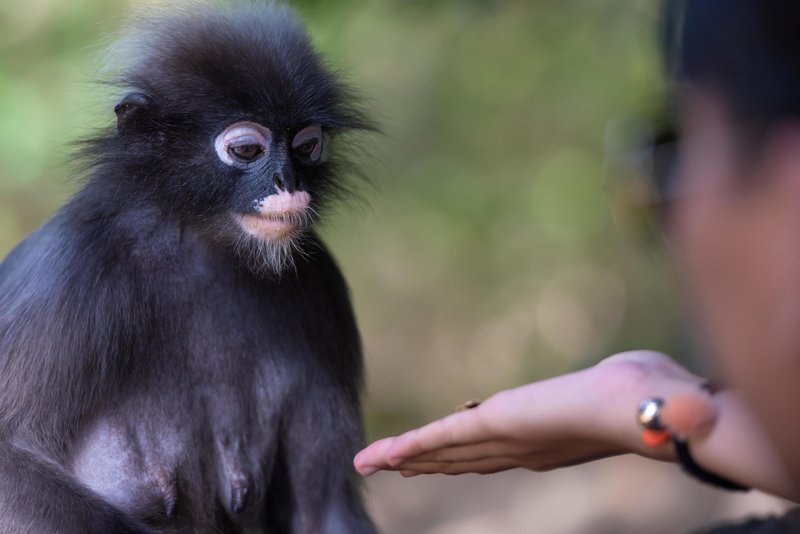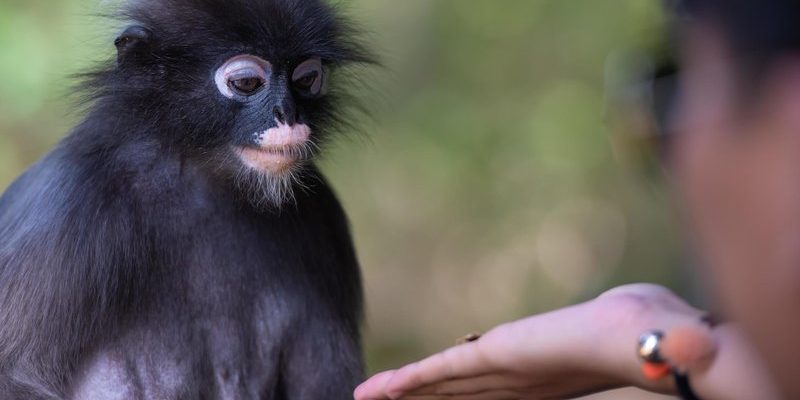
In this article, we’ll explore some of the most common myths about langurs and set the record straight. By the end, you’ll have a better understanding of these unique creatures, their behaviors, and why they matter in the animal kingdom. So grab your favorite drink and let’s dive into the world of langurs!
Myth 1: All Langurs Are the Same Species
One of the biggest misconceptions is that all langurs belong to the same species. In reality, there are many different species of langurs, each with its own unique traits and behaviors. For instance, you’ve got the Hanuman langur, known for its greyish fur, and the black-footed grey langur, which has distinct black feet.
These species have adapted to various habitats across Asia. They often display differences in size, color, and social behavior, depending on where they live. For example, the Northern Plains langur has a different social structure than the Dusky langur. It’s like how people from different regions have their own accents or styles; it’s all about adaptation!
Understanding these differences is crucial, especially when it comes to conservation efforts. If we assume that all langurs are the same, we might overlook the specific needs of each species, hindering their survival in the wild.
Myth 2: Langurs Are Aggressive and Dangerous
You might be surprised to hear that langurs often get a bad rap when it comes to their temperament. Many people believe they are aggressive or dangerous, mainly because of their size and sharp teeth. But here’s the thing: langurs are generally peaceful and social creatures.
They live in groups, called troops, and their interactions often showcase their playful nature. Sure, they can get territorial, especially during mating season, but that’s common in many animal species. Most of the time, they prefer to communicate through body language and vocalizations rather than physical confrontation. It’s like how friends might argue over a game but resolve it amicably afterward.
In their natural habitat, it’s rare for langurs to pose a threat to humans. If you encounter them in the wild, they’re more likely to be curious than aggressive. Respecting their space and observing from a distance can help ensure everyone stays safe.
Myth 3: Langurs Only Eat Leaves
People often think langurs are strictly herbivores that only eat leaves, but their diet is a lot more varied. While it’s true that they have a strong preference for leaves, they also enjoy fruits, seeds, and even flowers. Imagine a buffet—it’s not just salad on the table!
Different species of langurs have their own dietary preferences based on their environment. For instance, the Hanuman langur loves munching on figs, while other species might enjoy berries or young shoots. This varied diet helps them get the nutrients they need to stay healthy and thrive.
Moreover, their ability to adapt their diet plays a vital role in their survival, especially as they face habitat changes due to deforestation or urbanization. By understanding their eating habits, we can better appreciate the delicate balance they maintain in their ecosystems.
Myth 4: Langurs Are Monkeys
It’s a common mistake to refer to langurs as monkeys, but they actually belong to a separate group known as Asian colobine monkeys. In simple terms, langurs are a subset of monkeys but with distinct biological and behavioral traits. It’s like calling an orange a fruit but forgetting its unique flavor compared to an apple.
Langurs have some unique characteristics that set them apart from other monkeys. For starters, they possess a specialized stomach that helps them digest leafy vegetation efficiently. This adaptation allows them to thrive in environments where food is abundant but selective.
Additionally, their social structure can be quite distinct. Unlike some monkey species that might lean towards matriarchal societies, langurs often have unique hierarchies and social behaviors. So, while they share family ties with monkeys, they definitely march to their own beat.
Myth 5: Langurs Can’t Thrive in Urban Areas
You might think that langurs are strictly wild animals, unable to adapt to urban environments, but that’s a misconception. Many species of langurs have shown remarkable adaptability to urban settings. They can often be spotted in parks and temples, much to the delight of visitors.
In cities, langurs can find food sources that aren’t available in the wild, such as fruits and leftovers from humans. This adaptability, however, comes with its own set of challenges. Urbanization can lead to conflicts with humans, especially if langurs begin raiding gardens or crops. It’s like a game of survival, where both parties need to find a middle ground.
By educating ourselves on how these clever creatures adapt, we can create coexistence strategies that allow langurs to thrive in urban areas while keeping gardens safe. Everyone wins when we take the time to understand and appreciate wildlife!
Myth 6: Langurs Are Not Important for Ecosystems
Here’s something to keep in mind: langurs play a vital role in their ecosystems. Many people might think that because they’re not the largest or the most popular animals, they don’t influence their environment much. But let me explain why that’s simply not true.
Langurs help maintain the health of forests through their feeding habits. When they eat fruits and leaves, they inadvertently aid in seed dispersal. This means they help plants grow in different areas, promoting biodiversity. Without these wonderful creatures, some plant species might struggle to thrive, affecting the entire ecosystem.
Plus, by acting as prey for larger predators, langurs help maintain the food chain. So next time you think about the importance of wildlife, remember that even the smallest players can make a big difference!
Myth 7: Langurs Make Good Pets
It’s easy to think that langurs could be adorable pets, given their playful nature and charming looks. However, they are not suitable for domestication. Keeping a langur as a pet can lead to serious challenges and ethical concerns.
Langurs are social creatures that thrive in groups, and isolating one in a home can lead to stress and behavioral issues. They also have specific dietary and environmental needs that are difficult, if not impossible, to meet in a household setting. It’s like trying to care for a wild animal in your living room—unrealistic and potentially harmful.
Moreover, many places have laws and regulations prohibiting the ownership of wild animals, including langurs. Respecting that is crucial for their well-being and for maintaining biodiversity. Instead of trying to keep a langur as a pet, consider finding ways to support conservation efforts to help these beautiful creatures thrive in their natural habitats.
Langurs are more than just fascinating creatures; they symbolize the intricate web of life in our ecosystems. By debunking common myths and misconceptions, we can develop a deeper appreciation for these unique primates. Whether it’s recognizing their vital role in nature or understanding their social dynamics, every insight brings us closer to understanding the world around us.
So, the next time you hear someone mention langurs, you can share what you’ve learned. Just like a good cup of coffee shared with friends, knowledge is best when shared. Let’s keep the conversation going—because there’s always more to learn about the incredible beings we share this planet with!

